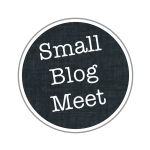I have two small kidlets, and while my youngest is just now starting to move around and get into things, my oldest is a serious
artiste when it comes to obtaining items that I thought were out of his reach. I had taken to storing all of my quilting and sewing tools on a high shelf in our linen closet to prevent the little mister from playing with my measuring tape, etc. However, my quilting time usually comes in spurts, and I really hate pulling out and putting away my tools eight times a day. Enter: The Sewing Tool Organizer. Once my husband puts some nails in the wall for me, this baby will hang from the wall, and everything will be easy-access.
I customized this to fit my sewing tools, and I will provide the measurements I utilized, but it's easy to customize for your needs, and I strongly encourage you do. Also, in the grand tradition of Audrey tutorials, this how-to assumes you
have a basic knowledge of sewing, quilting, and the jargon that comes
with the turf. If you have any questions, please feel free to ask them
in the comments, and I'll do my best to answer or direct you to other
resources.
Materials Needed:
(1) 11" x 20" fabric, aka, Panel A*
(1) 5.5" x 24" fabric, aka Panel B**
(2) pieces of backing fabric, large enough to accommodate the above fabric panels
(2) pieces of batting, large enough to make a proper quilt sandwich with the above fabric
fabric for binding
14" of bias tape (or other hanging loop material)
coordinating thread
20" dowel rod (optional)
*Feel free to make your panels as scrappy (or as sparse) as you'd like. For my 11" x 20", I used one continuous piece of fabric. For the 5.5" x 24", I used scraps to border the top.
**The 24" measurement in Panel B is entirely dependent on the number and depth of the pockets you'll be creating. I laid out all of my tools and took a guess that thankfully ended up being long enough, but if you're sewing a lot of deep pockets, tack on another few inches, just to be on the safe side.
Make a quilt sandwich Panel A, then quilt in whatever fashion pleases you, but may I recommend dense straight line quilting? It serves two purposes: one, it provides lots of structure to the organizer, and two, it makes lining up and sewing your pockets easier. I used my 1/4" presser foot and lined it up with the previous quilting line. From there, it was a lot of turning back and forth.
A LOT of turning.
Then, make a quilt sandwich with Panel B. Quilt. Again, I straight line quilted this bit to make for easy pocket sizing. Trim the excess backing and batting from your quilt sandwiches.
Prepare 24" of binding and sew it to the top only of your 5.5" x 24" quilt sandwich.
Now, here's where it gets tricky. If you haven't already laid out your tools and decided where you'd like what, do it. Try to balance out the weight of your tools so that one side isn't bearing the brunt of everything.
Place the wrong side of Panel B on top of the right side of Panel A. Match up the bottom left corners of your two quilt sandwiches, and pin the edge.
Sew your two left edges together--1/4" from the edge. Don't
worry about the exposed fabric--we'll be putting binding over the entire
thing.
Place your first tool up against that freshly sewn line, and, using the quilting lines on both sandwiches as guides to a perfectly straight line, and keeping the tool (in this case, a pen) in place, pin on the right side to form a pocket.
Remove tool and sew the pocket in place. Before moving on to the next pocket, double-check that your first tool fits comfortably inside the pocket. Don't worry about the open bottom--we'll take care of that later.
Repeat with your other tools until you've finished making pockets. When all of your pockets are complete, trim off any extra fabric you might have from the 5.5" x 24" panel. In my case, I trimmed a little under an inch.
Now, it's time to bind and polish off this baby! First, sew down the bottom edge of your two quilt sandwiches. Because your pockets have some depth to them, there will be some bunching of fabric, and try to spread that out evenly along each pocket to keep them neat.
Prepare enough binding to wrap around the larger rectangle, and attach. I usually handstitch my binding to the back of my quilted item, but in this case, I knew I was looking at several layers of fabric and two layers of batting, so I machine stitched my binding to the back, wrapped it around to the front, and machine-stitched it in place there too. I have been told that the more you practice with this, the neater it will look.
For my loops, I first top-stitched my bias tape, then cut it into (4) 3.5" strips. I folded each in half and secured them equidistantly across the top edge. Insert the dowel rod into your loops and hang, then marvel at your genius ability to outsmart curious toddlers!
As I mentioned before, post any questions in the comments section, and I'll do what I can to answer them. (And pretty pretty please let me know if you wind up making one of these for yourself!)

















































